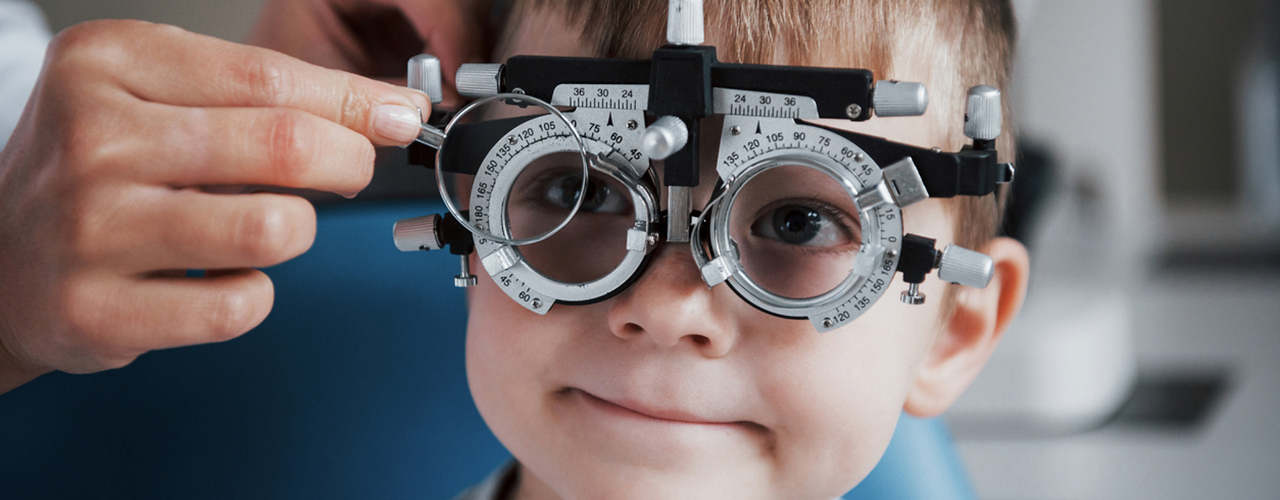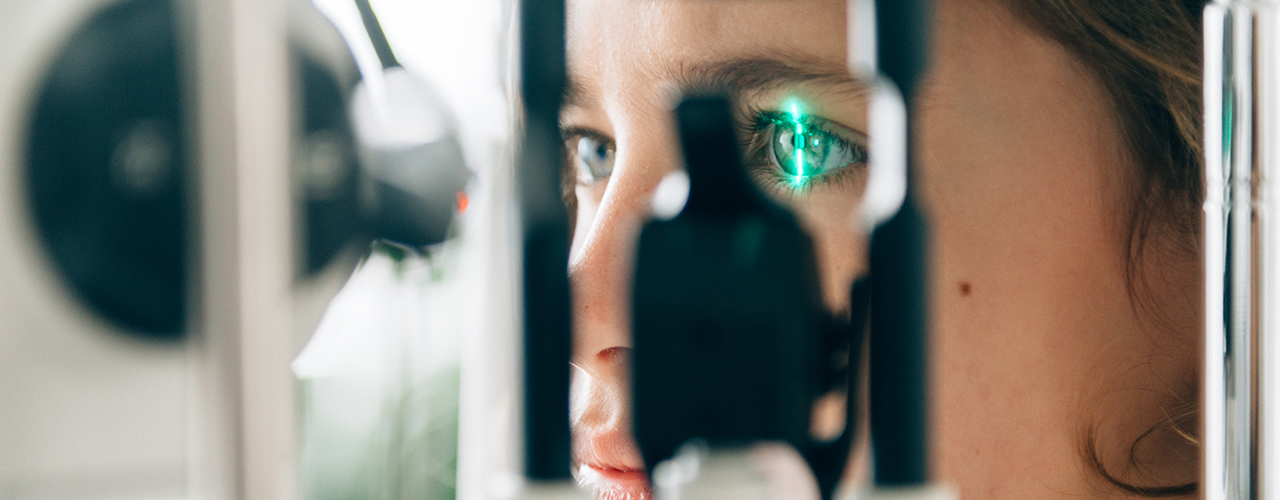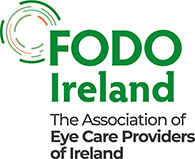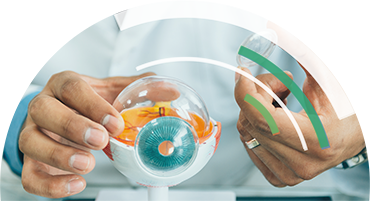You will find an overview of population needs, eye care services and the workforce below. If you are a policymaker, commissioner or researcher and have any questions or would like more detailed information, please get in touch: [email protected].
Eye health and vision correction underpin general health, modern society and the economy. As a services primary eye care enables children who need vision correction to learn and advance, adults to work, drive, fly, remain economically active and take part in leisure activities, and older adults to maintain independence, well-being and social inclusion. Regular eye examinations in primary care also mean visual deterioration and eye disease are picked up early when they can be treated and impairment avoided.
As well as the personal costs and emotional costs associated with preventable sight loss, the total economic cost of blindness in Ireland is estimated to be €1.1 billion [1].
Eye disease and visual impairment are closely correlated with age although recent years have seen also a rapid spread of myopia in the young, possibly linked to modern lifestyles.
The good news is that we live in a time where we can correct most vision problems, prevent many forms of sight loss and support people with permanent vision loss to live independently. This means the personal and wider economic costs of sight loss can be prevented or reduced through regular eye examinations in primary care.
The key is access to appropriate services at all key life stages.
Ireland now has major opportunities to improve access to eye care, meet more needs and prevent more sight loss and its economic, personal and social consequences. We set out the key challenges and solutions below.

In most high-income countries, eye problems in childhood are well managed but, regrettably, in Ireland services are failing. Census figures show that since 2011 there has been a 20% increase in the number of children with impaired vision [2].
At birth, all babies are checked for significant ocular pathology such as ocular media opacities and glaucoma, with additional checks for high-risk groups such as premature babies. Children are then screened at school entry at 4-5 years of age for vision and eye health problems.
As children grow older their eyes change, and it is vital to diagnose and treat new vision problems as early as possible. This is because amblyopia (or 'lazy eye') affects 4.5% of children in Ireland. Left untreated it can adversely impact quality of life, self-esteem and educational and career outcomes [3].
Unfortunately, many children in Ireland experience significant delays in accessing essential eye care services and are at risk of suffering worse visual outcomes as a result. For example, researchers have found children in Ireland have significantly higher rates of amblyopia than children in Northern Ireland, with uncorrected vision defects and socioeconomic disadvantage as contributing factors. Researchers added that "children without obvious visible eye defects were less likely to access eye care in Ireland, resulting in missed opportunities for intervention where necessary" [3].
This risk and inequality in outcomes are because younger children whose parents cannot afford private healthcare do not currently benefit from routine primary eye care. Instead, they depend on referral to the hospital ophthalmology service where they often experience long delays in accessing care owing to a lack of service capacity. This means the optimal window to help restore vision can be lost.
To ensure every child has access to essential eye care, and not just those whose parents can afford to pay, FODO Ireland is calling for every child to have access to a publicly funded primary eye care service to meet their needs. Healthy eyes and good vision in childhood should not depend on the serendipity of parental wealth, or the availability of hospital services except for those who need specialist hospital care, which most do not.

Today, 14% of the 4.9 million people in Ireland are aged 65 and older, and this is set to increase to 20% of the population by 2030 [4]. With over 54,000 people already blind or visually impaired, the National Council for the Blind of Ireland (NCBI) warns that the impact of vision loss will grow substantially in the future [5]. This is because older people are more likely to experience cataracts, diabetic eye disease, glaucoma and macular degeneration.
The most common eye problems in adults are summarised below.
Refractive error, including short-sightedness (myopia), long-sightedness (hyperopia) and astigmatism, is the most common type of eye problem and results in blurred vision.
Cataracts occur when the lens in the eye becomes less clear resulting in blurry vision. Cataracts in childhood are very rare compared to age-related cataracts. Where necessary, surgery is a very effective and safe treatment for cataracts in most patients.
Macular degeneration is more common in people over the age of 50. It can affect central vision and make it more difficult to do everyday tasks. There are two main types of macular degeneration - 'dry' and 'wet'. The wet form requires urgent medical attention in order to minimise the risk of severe vision loss, so it is important to seek urgent advice and support if you have symptoms of macular degeneration.
Glaucoma causes damage to the optic nerve, which results in irreversible loss of vision if left untreated. In contrast, the early diagnosis and treatment of glaucoma is effective at preventing sight loss in most cases. In the early stages of glaucoma, people are generally not aware their vision is reducing. That is why having regular eye examinations is important. This is even more so for people in higher risk groups, for example, those with a family history of glaucoma or those of African, Caribbean or Asian descent.
Diabetic eye disease can result in vision loss, which is why it is important everybody with diabetes has regular eye screening appointments and manages their blood sugar levels, blood pressure and cholesterol.
In all these cases, patients benefit from regular eye examinations and ongoing care to ensure they can access the support they need at the earliest opportunity and thereby minimise the risk of preventable sight loss and the impact of reduced vision.
As our population grows older, eye health needs will increase exponentially. There is an urgent need to ensure that more care is provided in primary eye care settings by optometrists and dispensing opticians so that the nation's increasing eye health needs can be met and preventable sight loss avoided.
HSE has said that: "Currently, acute hospitals conduct much work that can be safely and effectively completed in primary care" [6]. FODO Ireland supports the HSE goal to provide more eye health in primary care settings, where it is more easily accessible for patients.
Many people benefit from access to publicly funded primary eye care and hospital-based services, including:
- The Community Ophthalmic Services Scheme (COSS). This was originally launched in 1979 and is a fee-per-service scheme for medical card holders aged over 16. COSS is administered by the Health Service Executive (HSE) and provides access to an eye examination from an optometrist or ophthalmologist free of charge every two years. The Primary Care Reimbursement Service (PCRS) processes COSS payments on behalf of HSE. Medical card holders also receive help towards the cost of optical appliances. Around 30% of the population is currently eligible for the medical card scheme.
- The Optical Benefit Scheme is part of the Treatment Benefit Scheme run by the Department of Social Protection (DSP). Eligible adults are entitled to one eye examination with an optometrist every two years provided they meet specified Pay-Related Social Insurance (PRSI) criteria. Since 2017, people can also get help towards the cost of optical appliances. However, the scheme does not cover sight tests for VDUs and driving licences.
- The Community Ophthalmic Medical Treatment Scheme (COSMTS) is administered by the HSE and provides minor surgery or treatment by an ophthalmologist based on clinical need. It is open to adults with a medical card in Cork, Dublin, Kildare and the Midlands.
- The Diabetic Retinal Screening Programme is a service for people aged 12 and over with diabetes.The HSE publishes regular data on COSS, including optical reports. The Central Statistics Office also publishes retrospective data on COSS. HSE data show that 301,847 eye examinations were provided, and 474,185 optical appliances dispensed in 2019.
People who can afford to do so, and those who are not eligible for HSE or DSP schemes can access these essential eye care services privately.

In Ireland there are:
- 867 optometrists [8]. That is 17 per 100,000 residents
- 199 dispensing opticians [8]. That is 4 per 100,000 residents
- 140 ophthalmologists registered with the Irish College of Ophthalmologists [9]. That is 3 per 100,000 residents
- 41 orthoptists [10]. That is 1 per 100,000 residents.
Optometrists make up the single largest regulated eye care workforce in Ireland. They are regulated by CORU and perform detailed eye examinations to detect defects in vision, ocular disease or other health issues. Many now also perform advanced diagnostic tests.
Dispensing opticians make up the second-largest eye care profession. They can fit and supply spectacles to children and adults and can advise on and dispense low vision aids. Some dispensing opticians also dispense contact lenses.
Optometrists and dispensing opticians predominantly work in primary eye care settings on a contract basis, although some are directly employed by the Health Service Executive (HSE).
Ophthalmologists are medically trained doctors who specialise in eye health. They can diagnose and treat eye conditions to prevent sight loss. They might specialise in medical or surgical ophthalmology and are regulated by the Medical Council.
Orthoptists specialise in treating visual problems involving eye movements. Ophthalmologists usually refer to orthoptists where this is clinically indicated. There are plans for CORU to regulate orthoptists.
Other eye health professionals include ophthalmic nurses and technicians.
We will keep adding resources to help key decision-makers like you understand the full breadth and depth of eye care services and what eye care professionals can do to meet population needs in a sustainable way. In the meantime, if you would like any more information or support with understanding eye care or opportunities to tackle inequalities and to improve outcomes, please email us at [email protected].
Updates
Originally published: November 2020
Reviewed: NA
Next review date: January 2021
Info: NA
References and notes
[1] 2016, Green et al. The Cost of Blindness in the Republic of Ireland 2010-2020, https://www.hindawi.com/journals/joph/2016/4691276/
[2] NCBI, Facts about Sight Loss, https://www.ncbi.ie/facts-about-sightloss/ accessed Nov 2020
[3] 2019, Harrington S, Breslin K, O'Dwyer V, et al. Comparison of amblyopia in schoolchildren in Ireland and Northern Ireland: a population-based observational cross-sectional analysis of a treatable childhood visual deficit
BMJ Open doi : 10.1136/bmjopen-2019-031066
http://dx.doi.org/10.1136/bmjopen-2019-031066
[4] 2020, Central Statistics Office, population estimate https://www.cso.ie/en/releasesandpublications/er/pme/populationandmigrationestimatesapril2020/April 2020
Trinity College Dublin, The Irish Longitudinal Study on Ageing (TILDA) https://tilda.tcd.ie/about/background/ accessed Nov 2020
[5] NCBI, Facts about Sight Loss, https://www.ncbi.ie/facts-about-sightloss/ accessed Nov 2020
[6] 2017, HSE, Primary Care, Eye Services Review Group Report, https://www.hse.ie/eng/services/publications/primary/eye-services-review-group-report.pdf accessed 8 Nov 2020
[7] HSE, Optical Reports, Optical claims by Treatment Type for Medical Card holders filtered for 1 Jan-31 Dec 2019, https://www.sspcrs.ie/analytics/saw.dll?PortalPages
[8] 2019, CORU, Annual Report 2019,
https://www.coru.ie/files-publications/annual-reports/coru-annual-report-2019.pdf accessed 8 Nov 2020
[9] 2020, Irish College of Ophthalmologists, Eye doctors directory, https://www.eyedoctors.ie/opthalmologists/eye-doctors-database.asp?SpecialtyID=&MemberName=&searchusers=true&restr= accessed 8 Nov 2020
[10] 2020, Irish Association of Orthoptists, 'About us' states there "are currently 40 orthoptists working in Ireland, many of whom are part-time. We work mainly in the public service, either in hospitals or in the community setting, though many of us also work in the private sector". http://www.orthoptics.ie/about-iao.html accessed 8 Nov 2020

 Patients and public
Patients and public
 Policymakers
Policymakers
 Members
Members News and views
News and views

